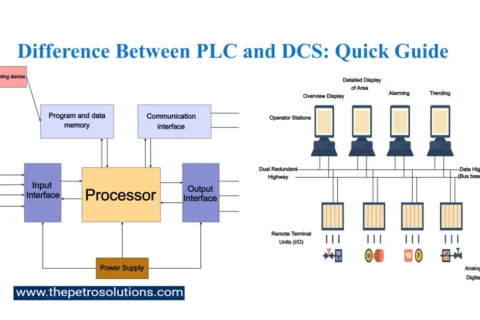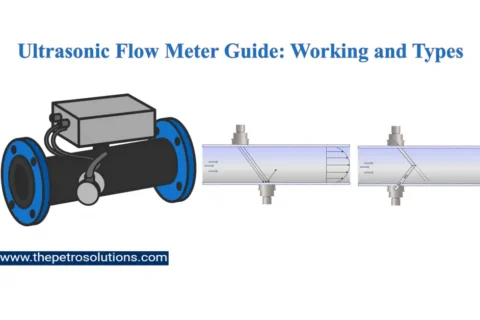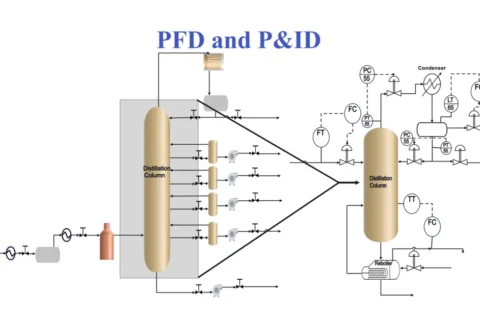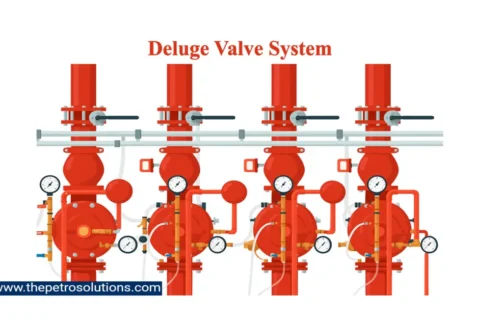Bitumen or Asphalt is a black viscous mixture of hydrocarbons obtained naturally or as a residue from petroleum distillation of crude oil. Petroleum Bitumen or Asphalt is a sticky, semi-solid, viscous petroleum, containing various hetero-atomic hydrocarbon compounds composed of metallic, sulfurous, nitrogenous, and oxygenated compounds. It is mainly used as paving material, road building, paint, water-proofing agent, etc. Industrially, it is produced from the vacuum residue of a petroleum refinery. According to the market requirement, this can be a good option for upgrading the bottom of the barrel.
Bitumen Production Processes
Residue from the distillation provides the base material for Bitumen production. Refining separates the lighter fractions from the residue and converts them into the bitumen product. Various manufacturing processes of bitumen are applied in the oil industry depending on the crude source and processing capabilities available such as;
- Distillation Process
- Aeration or Oxidation
- Blending
Distillation Process
By selection of crude oil feed and operating conditions, Bitumen of specific properties can be produced directly through distillation which is the most common Bitumen production process. It involves the reduction of crude oil, or a crude blend, in atmospheric or crude distillation and then vacuum distillation units. Bitumen produced in this manner is referred to as straight-run bitumen and is typically used in paving applications.
In this process, crude oil is heated at a temperature of 315 ~ 360 °C and introduced into a crude distillation Column. In the crude distillation column, lighter fractions are separated from the non- boiling components. The lighter fractions drawn are sent to other refinery units for further processing. The reduced crude or atmospheric residue is further introduced into a Vacuum distillation unit where the remaining lighter products are separated under vacuum. Reduced pressure causes the atmospheric residue to boil at a lower temperature and avoids unwanted thermal cracking. By controlling the pressure and temperature operating variables of the Vacuum distillation unit, Bitumen with varying levels of hardness can be produced.

Aeration or Oxidation Process
If required the physical properties of straight-run bitumen or vacuum residue can be further altered by blowing air through the residue feed at elevated temperatures at Bitumen Blowing Unit. The degree of Asphalt oxidation determines the various grades of bitumen that can be produced.
The Asphalt Air Blowing unit’s feed (Vacuum residue, De-asphalting pitch, Visbroken Bottoms, etc.) is blended, preheated, and pumped into a specially designed reactor. The reactor is equipped with a multistage agitator and a baffle system. The compressed air is injected into the reactor. The multistage agitator homogenizes the asphalt product and maintains a stable temperature of the material.
The injected air not only works as a reactant but serves to agitate and mix the bitumen, increasing both the surface area and rate of reaction. The bitumen absorbs the oxygen as the air moves up through the material in the reactor. Steam and water are sprayed above the bitumen level into the vapor phase. Steam suppresses the foaming in the material and depletes the oxygen content of the waste gases. The water cools the vapors and prevents after-burning and coke formation.
The final penetration and softening point of the blown bitumen product are affected by many factors like feedstock viscosity, the temperature of the reactor, the residence time in the reactor, and the ratio of air to bitumen feed into the reactor.
The blown Oxidized Asphalt product through the feed preheat exchanger to achieve the desired rundown temperature for storage in the product tank. The off-gases from the reactor at first are passed through the knockout drum to separate any hydrocarbons, then thermally incinerated and scrubbed to remove SOXs and other pollutants.
Removal of lighter frictions with process air increases the stiffness, and softening point and decreases the penetration of Bitumen. Multiple grades of Bitumen can be produced with the Oxidation method such as road grade, industrial grade, and performance grade Bitumen.

Blending
In Blending the higher and low viscosity residues are mixed in the required proportions to produce the product of desired specifications and various Bitumen Grades. Further, various types of polymers can also be blended with Bitumen to produce Polymer Modified Bitumen to improve the performance of bitumen in its industrial applications. In Blending the finishing product could be as per applications of bitumen;
- Bitumen Emulsions are stabilized suspensions of bitumen in water used in various industrial applications. The advantage of Bitumen emulsion is to handle with minimal or no heating. In road construction, emulsions are utilized for tack coats, fog seals, slurry seals, and bituminous surface treatment. In the presence of water, emulsions have no flash point and are not flammable or explosive.
- Polymer Modified Bitumen is a mixture of selected bitumen with added polymers (such as thermoplastics) that gives extra strength, high cohesiveness, resistance to fatigue, and deformations. Polymer-modified bitumen (PMB) is one of the specially produced bitumen grades that is used in the construction of roads for heavy-duty traffic, airfields, and in extreme climatic conditions such as hot deserts or regions.
Mr. Sikandar Rasheed is our guest writer. He is a BSc. Chemical Engineer and has more than 04 years of working experience as an Operations Engineer at the Asphalt Air Blowing Unit, Pak Arab Oil Refinery, Pakistan.
Top References
- Shell Bitumen Handbook Sixth Edition
- Petroleum Fuels Manufacturing Handbook by Surinder Parkash
- Bitumen Production Process by Eurobitume website and Video
- Bitumen Production Process By RAHA Bitumen Co
For further information, discussion and queries please comment in the box below or contact us at admin@ or follow us on Facebook & LinkedIn.





